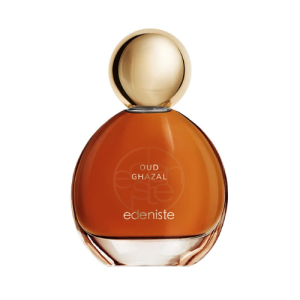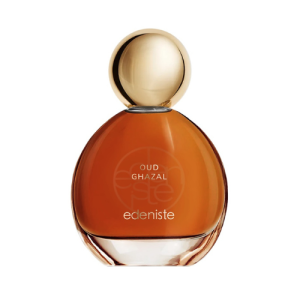Don't miss our holiday offer - up to 50% OFF!
Is Burning Incense Harmful? Risks, Benefits, and Safety Tips
Discover the truth about burning incense: its risks, benefits, and how to enjoy it safely. Learn if incense is harmful and explore expert insights for a worry-free aromatic experience.
Is Burning Incense Harmful? Unpacking the Facts and Myths
Burning incense has been a cherished practice for centuries, offering a sense of calm, spiritual connection, and a pleasant aroma. But as with anything that involves smoke, questions about its safety naturally arise. Is burning incense bad for you? Let’s dive into the science, explore the risks and benefits, and uncover how to enjoy incense responsibly.
The Burning Question: Is Incense Safe?
The short answer? It depends. High-quality, natural incense used in moderation poses minimal health risks. However, like any organic material, burning incense releases chemicals into the air. The key is understanding what these chemicals are, how they affect you, and how to mitigate potential risks.
For a quick overview, the Australian Government Cancer Council provides a helpful summary: while incense smoke does release chemicals, no large-scale studies have conclusively linked moderate home use to significant health risks like cancer. That said, common-sense precautions—like proper ventilation and avoiding prolonged exposure—are essential.
The Benefits of Incense: Why People Love It
Before we delve into the risks, let’s not overlook the benefits. Incense has been used for centuries for its therapeutic properties. Ingredients like sandalwood, frankincense, and lavender are scientifically proven to promote relaxation, improve mood, and even repel insects. Compared to synthetic air fresheners or candles, natural incense can be a healthier and more aromatic alternative.
What’s in Your Incense? Breaking Down the Ingredients
Natural vs. Synthetic Incense
Incense is made from aromatic substances like woods, resins, flowers, and herbs, combined with a heat source to release their scent. Common natural ingredients include:
– Woods: Sandalwood, aloeswood, cedar
– Resins: Frankincense, myrrh, benzoin
– Flowers: Lavender, rose, jasmine
However, not all incense is created equal. Many products on the market contain synthetic fragrances and chemicals derived from petrochemicals. These artificial additives can pose greater health risks than natural ingredients.
How Incense Is Burned: Methods and Traditions
Incense burning has evolved over time. The most common methods include:
1. Sticks, Cones, or Coils: Pre-made incense is lit and allowed to smolder.
2. Charcoal Burning: Popular in the Middle East, this involves placing incense chips (like oudh or bakhoor) over burning charcoal.
Each method releases smoke and chemicals, but the composition varies depending on the ingredients and burning technique.
What’s in the Smoke? Understanding the Chemicals
When incense burns, it releases smoke containing several chemicals, including:
– Carbon Monoxide, Sulfur Dioxide, Nitrogen Dioxide: Can cause dizziness, respiratory issues, and heart complications at high levels.
– Polycyclic Aromatic Hydrocarbons (PAHs): Linked to long-term cancer risks.
– Volatile Organic Compounds (VOCs): Can irritate the eyes, nose, and throat, and exacerbate asthma.
– Particulate Matter (PM): Fine particles that can harm the lungs and respiratory system.
While these chemicals sound alarming, it’s important to note that they’re also released by everyday activities like driving, cooking, and even lighting candles.
Is Incense Linked to Cancer? What the Research Says
Studies Showing Potential Risks
Some studies suggest a link between incense smoke and health issues like respiratory problems, cardiovascular disease, and cancer. For example:
– A study of temple workers in Taiwan found higher rates of respiratory issues.
– Research in Singapore indicated a slight increase in respiratory cancer risk among long-term incense users.
However, these studies often focus on high-exposure environments like temples, which are not comparable to moderate home use.
Studies Showing No Significant Risks
Other research found no direct link between incense use and health problems. For instance:
– A Hong Kong study found no association between incense smoke and respiratory symptoms like asthma or bronchitis.
– Another study confirmed that smoking, not incense, was the primary risk factor for lung cancer.
Natural vs. Synthetic Incense: Which Is Safer?
Many studies don’t differentiate between natural and synthetic incense, but it’s likely that artificial additives contribute to the negative health effects observed. High-quality, natural incense is generally safer and more beneficial.
Is Incense Smoke Worse Than Cigarette Smoke?
No. While both release harmful chemicals, cigarette smoke is far more toxic. Studies show that cigarette smoke significantly reduces fertility in mice, while incense smoke had no such effect. Plus, incense is typically used in moderation, whereas cigarette smoking is often habitual and frequent.
What About Pets? Is Incense Safe for Dogs and Cats?
There’s no definitive research on incense’s effects on pets, but their smaller size and heightened sense of smell make them more sensitive. To keep your furry friends safe:
– Burn incense in a well-ventilated area.
– Keep pets at a distance (6-8 feet away).
– Allow them to leave the room if they seem uncomfortable.
Incense and Respiratory Conditions: Proceed with Caution
If you have asthma or other respiratory issues, be cautious. Even small amounts of incense smoke can irritate sensitive lungs. Start with short sessions in a well-ventilated space, and stop immediately if you experience discomfort.
How to Burn Incense Safely: Tips for Responsible Use
To enjoy incense without worry, follow these guidelines:
1. Choose High-Quality, Natural Incense: Avoid products with synthetic fragrances.
2. Ventilate the Area: Keep windows or doors open to ensure proper airflow.
3. Moderation Is Key: Limit use to 1-2 sticks or cones per day.
4. Keep It at a Distance: Place incense away from your face and pets.
5. Use an Air Purifier: This can help reduce particulate matter in the air.
The Bottom Line: Enjoy Incense Responsibly
Burning incense can be a safe and rewarding practice when done mindfully. By choosing natural products, ensuring proper ventilation, and using moderation, you can enjoy the benefits of incense while minimizing potential risks. So light up, breathe deeply, and let the soothing scents transport you to a place of calm and relaxation.
Ready to explore the world of incense? Start with high-quality, natural options and follow our safety tips to create a serene and healthy environment.




